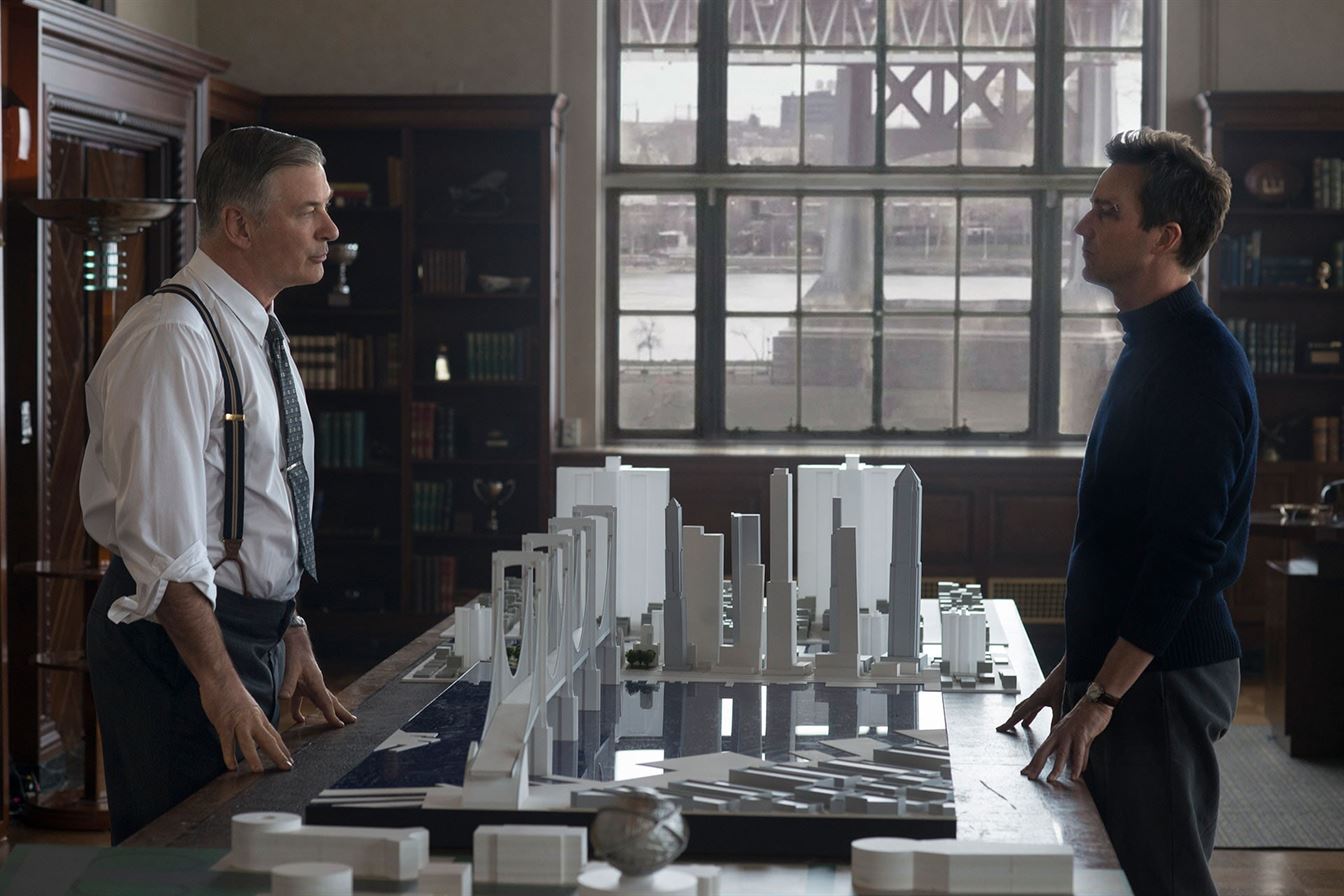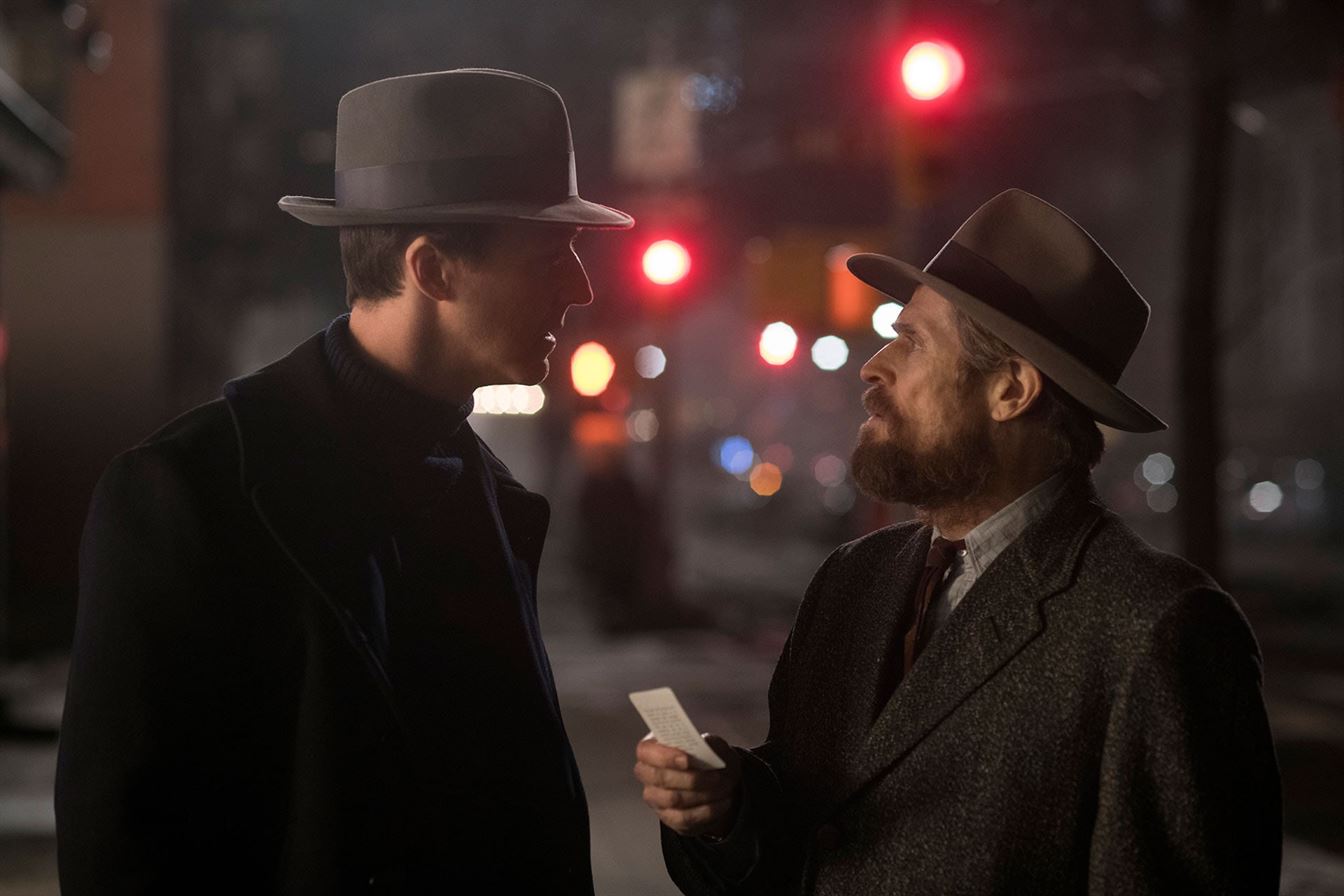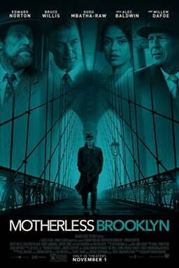Passion project “Motherless Brooklyn,” the second auteur film to be directed by Edward Norton, serves as the perfect example of putting character before plot. At times, the film ambitiously tries to push beyond what the plot demands to go into a deeper character study of its protagonist, Lionel.
Private detective Lionel Essrog (who has undiagnosed Tourette syndrome), played by Norton, is launched into a mystery following the death of his mentor and good friend Frank Minna, played by Bruce Willis.

“Motherless Brooklyn” is a film adaptation of the 1999 novel by Jonathan Lethem. Photo courtesy of Warner Bros. Pictures
Norton provides the audience with a great jumping off point, establishing a clear conflict and tone. This is an easy film to track scene-to-scene, but the biggest problem is that there is too much going on. While there are scenes in this film that are smart, showing good examples of a private detective’s process, there are others that feel clunky and unnecessary. This was a disappointment considering Edward Norton’s writing skill.
There is a very interesting contrast between the way Lionel speaks in scenes and the way he delivers voice-over monologues. However, after the first act of the film, I felt like there were certain points where Lionel should have had a verbal tic, but he did not. For example, there were certain dangerous situations that should have provoked a tic, but instead Lionel kept his cool.

The film stars Edward Norton as Lionel Essrog. Photo courtesy of Warner Bros. Pictures
The dialogue in this film is very natural, and the conversations with Lionel are fascinating because of his speech impediment, which interrupts the flow of dialogue. This can create either a moment of tension, comic relief or make the character appear more endearing. However, a lot of the dialogue in the film is undermined by a choppy editing style and lazy shot design.
What cripples this film is the lack of interesting cinematography. There is one interesting dream sequence that was shot underwater, but nothing else was quite notable. I was surprised to find the film did not have more wide shots to better capture the actors. In his last film, “Keeping the Faith,” Norton relied heavily on wide angles to show action and reaction within the same frame. Often times, the film cuts after holding a shot for three seconds, which becomes jarring in serious scenes.

The film takes place in New York City in the 1950s. Photo courtesy of Warner Bros. Pictures
I wanted to connect with a lot of these characters and their relationships, such as Norton’s Lionel or Laura Rose, played by Gugu Mbatha-Raw. However, any time there is an intimate moment between the two of them, the camera cuts before I could see the character connection.
Musical choices in the film were fun, with an original song by Radiohead’s Thom Yorke, and plenty of jazz songs that made me dance in my seat. The soundtrack fit the tone and has been playing on loop in my car since I left the theater.
Willem Dafoe steals the show with a wonderful performance. His character in the story initially appeared to only be a source of information for other characters, but was revealed to have more depth. It was a truly three-dimensional character, with a history that was present on screen.
Any time he is in the frame, the story becomes more interesting, and there is always something added to the plot. This is a problem because once the audience meets Willem Dafoe, the movie takes a huge detour and delivers a mess of unnecessary scenes.
Overall, this film is enjoyable to watch, but there are too many missing elements in both visual and narrative standpoints.



